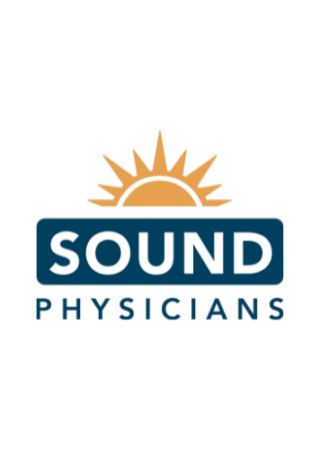June 27, 2018
The Opioid Crisis

Per the National Institute on Drug Abuse (NIDA) — which just happens to be two miles from my house in Rockville, Maryland — 200 million prescriptions for opioids are written annually, and one death relating to opioids occurs every 20 minutes. We are in the throes of the prescription opioid crisis, and I wonder, how did we get here? In a section on their website, the NIDA states: “In the late 1990s, pharmaceutical companies reassured the medical community that patients would not become addicted to prescription opioid pain relievers, and healthcare providers began to prescribe them at greater rates. This subsequently led to widespread diversion and misuse of these medications before it became clear that these medications could indeed be highly addictive.” NIDA Director, Dr. Nora Volkow, goes even further in a video linked on their site, specifically stating that the opioid crisis was spurred on in 2000 when the Joint Commission required hospitals to assess pain levels in patients. Thereafter, the prescription of opioids increased significantly, she concludes. So, the great irony of our opioid crisis is that it was self-inflicted and completely avoidable. In the rush to relieve pain and suffering two decades ago, caution and common sense were thrown to the wind, resulting in the propagation and misuse of prescription opioids. The Hippocratic Oath directs providers to, “First, do no harm.” Unfortunately, using opioids to treat chronic pain violates this rule in some instances, and can place patients on the path to addiction, while perpetuating their pain. Sadly, as the healthcare system tries to quickly unwind the damage and execute an about-face, we are at risk of making the same mistakes over again.
Education is key
As an internist, psychiatrist, and hospitalist, I have been watching these trends emerge in my hospital patients over the last 20 years. In my opinion, the great failing of our approach to managing pain, then and now, is a lack of education for both providers and patients around three core issues: the biological basis of addiction, how to manage chronic pain, and the addictive potential of prescription opioids. Unlike many disease processes, the brain pathways for addiction have been understood for quite some time and converge in the nucleus accumbens. This nucleus is part of the brain’s reward system and also activates reinforcement and pleasure centers. Most drugs of abuse — including opioids, alcohol, cocaine, stimulants, and cannabis — work through the nucleus accumbens. In addition, abnormal expression of certain proteins in the nucleus accumbens drives drug-seeking behavior and addiction. Despite understanding these neural pathways for addiction, there has been no coordinated focus on educating providers and patients about the addictive potential of opioids — or any potentially addictive medication — before they are prescribed. Don’t get me wrong; prescription opioids truly are “wonder” drugs, capable of eliminating severe pain, such as an excruciatingly painful long bone fracture. However, they are best used for acute pain and are less effective for treating chronic pain.
When prescribing opioids, take these steps
As hospitalists, we frequently have to manage patients with chronic pain, made all the more difficult when patients are on opioids daily. In addition, patients may have an acute-on-chronic exacerbation of pain during their hospitalization, or have murky symptoms complicated by drug withdrawal, anxiety, simultaneous use of other addictive substances (like benzodiazepines), and behavioral dysregulation. When in these situations, I like to obtain a personal and family history of addiction from the patient as a first step in the assessment. I also ask the patient what exacerbates their pain and how they managed discomfort at home before taking opioids. Many patients suffer from undiagnosed anxiety, depression, or sleep disorders, and are experiencing significant stress in their home or work lives, which impact the sensation of pain. Next, try to determine if the patient has crossed from opioid use to an Opioid Use Disorder (DSM-V criteria). Under both definitions, patients use prescription opioids, but when use of opioids is impacting family, social, or employment obligations, the severity of use has risen to a diagnosable disorder. More severe abuse of opioids is characterized by tolerance (using more drug to get the same effect), physiological withdrawal, unsuccessful efforts to cut down on use, more and more time spent feeding the addiction, and potential legal troubles. If an Opioid Use Disorder is suspected, it’s time to have a frank discussion with the patient and discuss treatment options, or refer them to a qualified specialist. If the patient’s pattern of use is not concerning for addiction or an Opioid Use Disorder, then it’s appropriate to discuss the potential for developing such symptoms and provide non-addictive alternatives for managing chronic pain. Examples of non-addictive therapies for treating pain include scheduled doses of acetaminophen, NSAIDs, gabapentin for neuropathic pain, localized steroid injections, physical therapy, and even acupuncture. If at all possible, avoid routine or scheduled IV opioids since the potential euphoric rush from parenteral delivery promotes addiction. If opioids must be used, it is more prudent to choose oral, topical, or even subcutaneous preparations. The goal should be to reduce the total amount of opioids used over time, but this is mostly accomplished in the outpatient setting. However, it is very appropriate to help the patient begin that journey during the hospitalization by providing education, counseling, and encouragement. Most importantly, try to have discussions about opioid use in an empathic manner, taking care to avoid projecting a judgmental tone or feeding into personal biases about addiction. This is easier said than done in some instances, but even patients at “rock bottom” in their addiction can recover and achieve normal, productive lives. As a rule of thumb, always offer patients a chance to get treatment for their addiction, even if they have failed repeatedly. Many patients have attained lasting sobriety after failing dozens of times. Finally, one of the most important clinical decisions to weigh is whether an intervention or treatment using opioids is therapeutic. Frequently, we are placed in situations as prescribing providers where we are asked to order an opioid by the patient that might make clinical sense in the short run (i.e., alleviate immediate pain), but won’t provide a therapeutic outcome for the long term.
Think long-term
For instance, if a hospitalized patient is struggling with chronic pain and addiction to opioids, usually the request is for more opioids given more frequently, sometimes in IV form. Doing so is not therapeutic because giving the patient more addictive substances only feeds the addiction, and will ultimately make the pain worse due to drug tolerance. The therapeutic thing to do, in this case, is to discuss with the patient how opioids often make pain worse due to tolerance. Then, come up with a strategy to limit or decrease use of opioids, while addressing pain with non-addictive measures. As a caveat, these strategies may not apply to patients nearing the end-of-life with terminal illness, since there is usually less concern about addiction and a greater focus on alleviating pain and suffering. The good news is, there are three effective drugs for managing opioid addiction—buprenorphine, methadone, and long-acting naloxone. In addition, the opioid crisis has already spurred on more drug development, including development of potential morphine receptor agonists that work only in the spinal cord, and avoid addiction pathways in the brain. Due to all the attention finally being paid to this epidemic, I believe the opioid crisis will eventually subside, especially as best practice and new laws emerge. We will still have to ensure that every provider gets fundamental education about pain management, addiction, and drugs of abuse. An effort needs to be made to learn how to have honest, empathic discussions with our patients about risks and benefits of any treatment we recommend.



